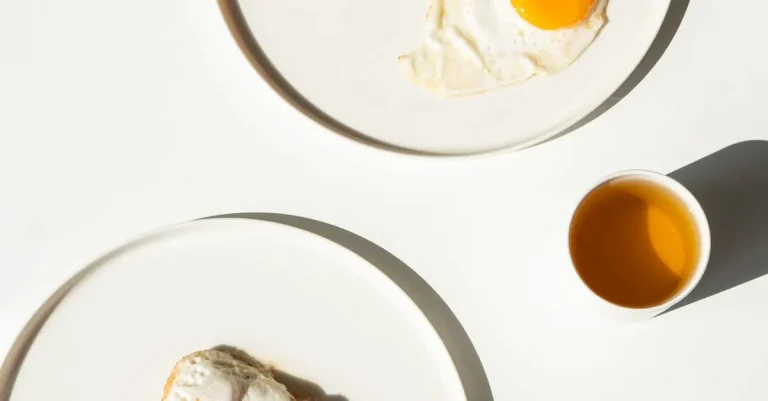How Much Is A Real Ivory Bracelet Worth In 2023?
Ivory jewelry like bracelets have long been treasured for their beauty and rarity.
But with ivory being illegal to harvest and trade in many parts of the world, determining the value of a real ivory bracelet can be complicated.
If you’re short on time, here’s a quick answer to your question: The value of a real ivory bracelet can range from $500 to over $5,000 depending on the bracelet’s age, craftsmanship, color, and more. Authentic antique ivory bracelets with intricate carvings can fetch the highest prices.
In this comprehensive guide, we’ll cover everything you need to know about assessing the value of real ivory bracelets, from identifying authentic ivory to pricing factors.
We’ll also discuss the complex legal issues surrounding the ivory trade today. Let’s dive in!
How to Tell if an Ivory Bracelet is Real
With the value of ivory skyrocketing in recent years, it’s important to know how to distinguish between real and fake ivory. If you’re considering purchasing an ivory bracelet, here are some key indicators to help you determine its authenticity.
Look for Schreger Lines
One of the most reliable ways to identify real ivory is to look for Schreger lines. These are a distinct pattern of intersecting lines that are visible on the surface of genuine ivory. They resemble a series of diamond-shaped figures and are unique to ivory.
To see these lines, use a magnifying glass and look closely at the bracelet. If you can clearly see the Schreger lines, there’s a good chance that the ivory is real.
Examine the Color
The color of the ivory can also provide valuable clues about its authenticity. Real ivory tends to have a warm, creamy color with a slight yellow or brown tint.
It should not be pure white or have any unnatural color variations. If the color of the bracelet appears too uniform or lacks the characteristic warmth of genuine ivory, it may be a sign that it is fake.
Consider the Weight
Another important factor to consider is the weight of the bracelet. Real ivory is denser and heavier than most imitations.
Gently hold the bracelet in your hand and compare its weight to other materials of similar size. If it feels surprisingly lightweight, it could be an indication that it is not made of real ivory.
Check for Signs of Craftsmanship
Authentic ivory bracelets are often crafted with great attention to detail. Look for signs of intricate carving or finely etched designs on the surface of the bracelet.
Genuine ivory will typically exhibit the marks of skilled craftsmanship. If the bracelet lacks any discernible craftsmanship or appears to have been mass-produced, it is more likely to be a fake.
Remember, it’s always best to consult with an expert or a reputable dealer when purchasing an ivory bracelet. They can perform further tests, such as infrared spectroscopy or DNA analysis, to confirm its authenticity.
Additionally, it’s crucial to be aware of the legal and ethical considerations surrounding the purchase and sale of ivory, as the trade of certain types of ivory may be restricted or prohibited in some regions.
Factors that Impact an Ivory Bracelet’s Worth
Age and Provenance
The age and provenance of an ivory bracelet play a significant role in determining its worth. Antique ivory bracelets from the 19th century or earlier are highly sought after by collectors and can command a higher price due to their historical value.
Provenance, or the documented history of the bracelet, also adds to its worth. Bracelets with provenance, such as those belonging to famous individuals or from notable events, can be more valuable.
Craftsmanship Quality
The craftsmanship quality of an ivory bracelet is another important factor in determining its worth. A well-crafted bracelet with intricate details and expert carving is highly desirable.
The skill and artistry involved in creating the bracelet can significantly increase its value. Buyers and collectors look for bracelets that showcase the mastery of the artisan, enhancing the overall worth of the piece.
Bracelet Type and Style
The type and style of an ivory bracelet also impact its value. Certain types of bracelets, such as bangles, cuffs, or link bracelets, may be more popular among buyers, which can drive up their worth.
Additionally, bracelets with unique or rare designs are often valued higher. Styles that reflect specific periods or cultural influences can be particularly sought after, adding to their worth.
Ivory Color
The color of the ivory used in a bracelet can affect its worth. Ivory can range from a creamy white to a deeper yellow or brown hue.
Pure white ivory is generally considered more valuable due to its rarity. However, there are also collectors who appreciate the unique beauty of ivory with a yellow or brown tone. The color preference may vary depending on the market demand and individual buyer preferences.
Bracelet Size
The size of an ivory bracelet can also impact its worth. Larger bracelets may require more ivory material and involve more intricate carving, which can increase their value.
However, smaller bracelets can also be highly valued if they are rare or have exceptional craftsmanship. The size of the bracelet should be considered in conjunction with other factors to determine its overall worth.
Other Materials
Some ivory bracelets may incorporate other materials, such as precious metals, gemstones, or decorative elements. The presence of these additional materials can enhance the bracelet’s worth, especially if they are of high quality or hold significant value on their own.
The combination of ivory with other luxurious materials often results in a more valuable and visually appealing piece.
It’s important to note that the worth of an ivory bracelet can fluctuate over time due to market trends, changing regulations, and ethical considerations surrounding the ivory trade.
It is always recommended to consult with experts or appraisers who specialize in ivory to get an accurate assessment of a bracelet’s worth in the current market.
Legal Restrictions on Ivory Trade
As global awareness about the devastating impact of ivory trade on elephant populations continues to grow, countries around the world have implemented legal restrictions to combat this issue.
These restrictions aim to protect endangered species, promote conservation efforts, and prevent the illegal trade of ivory.
International Trade Bans
One of the most significant steps taken to address the ivory trade is the implementation of international trade bans.
Organizations such as the Convention on International Trade in Endangered Species of Wild Fauna and Flora (CITES) have played a crucial role in advocating for these bans. CITES is an international agreement between governments that aims to ensure that international trade in wild animals and plants does not threaten their survival.
The global ban on ivory trade went into effect in 1989, with the prohibition of international commercial trade in African elephant ivory. This ban has been instrumental in reducing the demand for ivory products and curbing the poaching of elephants for their tusks.
U.S. Federal Ivory Laws
In the United States, federal laws have been enacted to regulate the trade and possession of ivory.
The U.S. Fish and Wildlife Service (USFWS) is the primary federal agency responsible for enforcing these laws. Under federal regulations, it is illegal to import, export, or sell ivory across state lines without proper documentation.
The U.S. has implemented a near-total ban on the commercial trade of African elephant ivory, with limited exceptions for antiques and certain pre-existing items.
The sale of ivory across state lines is prohibited, except for bona fide antiques that meet specific criteria outlined by the USFWS. This ban aims to discourage the illegal trade and protect elephant populations from further harm.
State Ivory Bans in the U.S.
In addition to federal regulations, several individual states in the U.S. have enacted their own ivory bans.
These state laws vary in their scope and restrictions, with some states imposing stricter regulations than others. Some states have implemented complete bans on the sale and possession of ivory, while others allow for limited exceptions.
It is important to note that state laws regarding ivory may differ from federal regulations, and individuals should familiarize themselves with the specific laws in their state to ensure compliance.
Violations of these laws can result in significant penalties, including fines and imprisonment.
Estimated Value Range for Real Ivory Bracelets
Antique Ivory Bangles – $1,500+
Antique ivory bangles hold immense historical and cultural value, making them highly sought after by collectors and enthusiasts. These bracelets are typically crafted from elephant tusks, which were commonly used in the past.
Due to their rarity and the increasing restrictions on ivory trade, the value of antique ivory bangles has skyrocketed in recent years. With prices starting at $1,500 and going up, these bracelets are considered valuable investments.
Vintage Carved Ivory Cuff Bracelets – $2,000-$5,000+
Vintage carved ivory cuff bracelets are exquisite pieces of art. Crafted with intricate designs, these bracelets showcase the exceptional craftsmanship of skilled artisans.
The value of vintage carved ivory cuff bracelets can vary depending on factors such as the intricacy of the carving, the age of the piece, and its overall condition. Prices for these bracelets can range from $2,000 to $5,000 and even higher, depending on their rarity and desirability.
Modern Bangles – $500-$1,500
Modern ivory bangles, crafted from ethically sourced materials, offer a contemporary twist on a traditional accessory. These bracelets are often made from legally obtained ivory substitutes, such as vegetable ivory or recycled ivory.
While they may not hold the same historical value as antique or vintage pieces, modern ivory bangles can still be highly valued for their unique design and craftsmanship. Prices for modern ivory bangles generally fall within the range of $500 to $1,500.
It’s important to note that the prices mentioned above are approximate and can vary depending on various factors such as market demand, condition, provenance, and the overall quality of the bracelet.
If you are considering purchasing or selling an ivory bracelet, it is advisable to consult with reputable antique dealers or appraisers who specialize in ivory jewelry.
Conclusion
Determining the value of real ivory jewelry like bracelets involves many factors.
In general, intricately carved antique bracelets command the highest prices while plain modern bangles fetch less. Proper authentication and appraisal is key to ensuring you comply with the law and get a fair price.
With ivory bans spreading globally, the market for elephant ivory is vanishing. Any collector looking to buy, sell or inherit ivory pieces should get professional help assessing their legality and worth. Handled properly, your vintage ivory bracelet could be a worthwhile investment.










